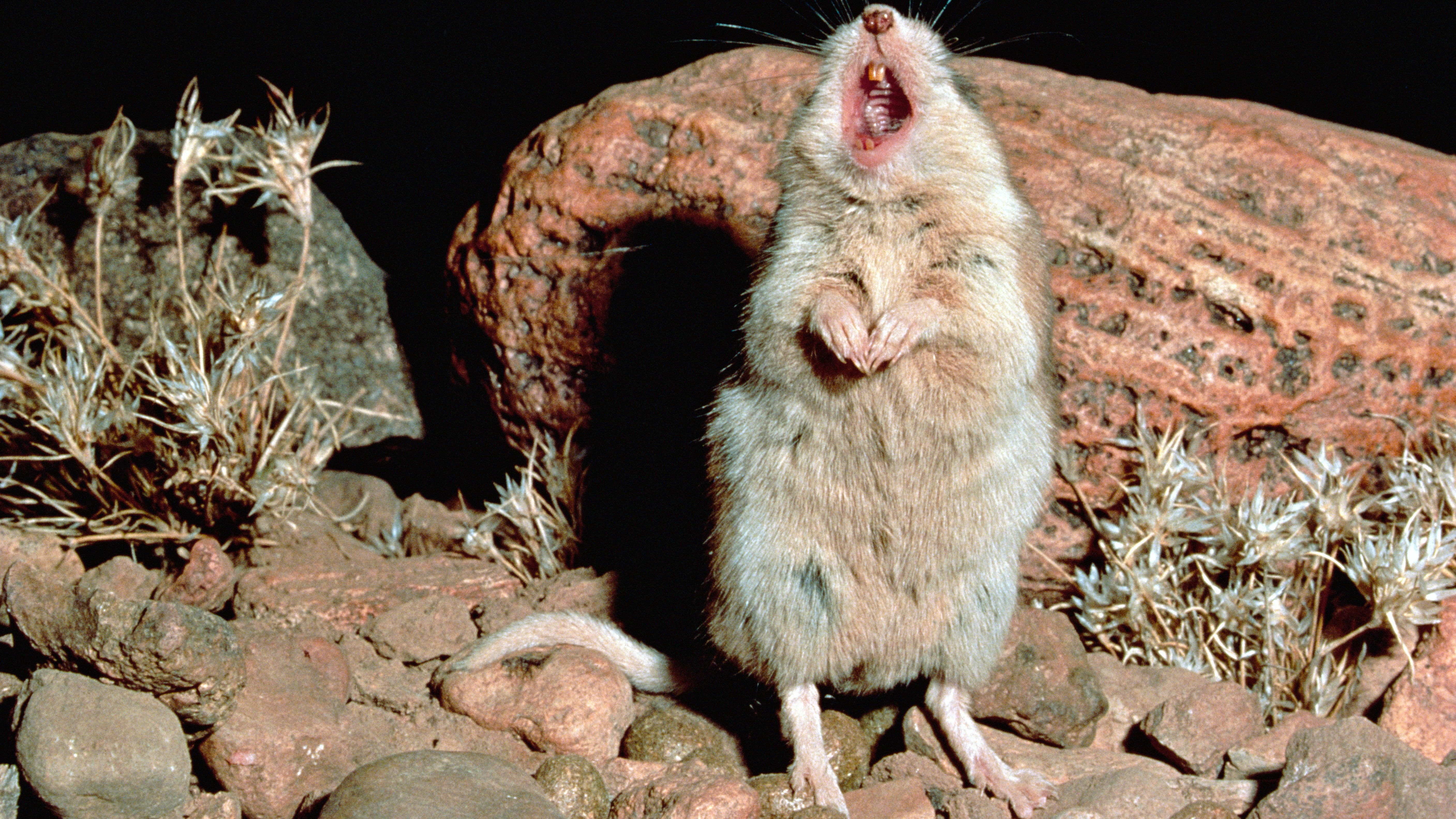
Name: Southern grasshopper mouse (Onychomys torridus)
Where it lives: Southwestern U.S. and northwestern Mexico
What is eats: Scorpions, insects, other rodents and some plant material
Why it's awesome: The southern grasshopper mouse is a carnivore that's largely immune to scorpion venom, and howls at the moon before it kills like a tiny wolf.
This mouse species is an extremely aggressive predator and will attack pretty much anything moving that isn't significantly bigger than itself. It even resorts to cannibalism when food is scarce. It stalks prey before seizing it, then kills with a bite to the head.
One of its favorite prey is the Arizona bark scorpion (Centruroides sculpturatus) — whose venom is potent enough to kill humans.
Related: A war of the rats was raging in North America decades before the Declaration of Independence
To get around this, the southern grasshopper mouse reduces the venom's effects by shutting down the chemical channel that transmits the pain signal to the brain when that particular venom is present. This means they are essentially numb to the pain — although researchers still don't know why the toxin isn't lethal to them.
The mouse is also able to bite off the scorpion's tail, rendering it incapable of stinging.
The southern grasshopper mouse is also famous for howling at the moon — standing up on its hind legs, pointing its nose into the air and producing high-pitched vocalization through its mouth that can be heard for up to 330 feet (100 meters).
Their vocalizations are produced in the same way humans speak and wolves howl — by creating tissue vibration induced by airflow, according to a study published in 2017. The team also discovered these mice have a bell-shaped vocal tract that increases vocal intensity.
The howl, which is often produced just before a kill, is believed to help mark the mouse's territory. The southern grasshopper mouse is fiercely territorial and mostly solitary — while members of this species can live in male-female pairs, this often ends in one killing the other, according to Animal Diversity Web.







